With a scorching sun and arid air, steeped in rugged terrain, Afghanistan seems from afar to be an unlikely place for farmland.
Up close, many areas of the country straddling central and south Asia have ripe conditions for agriculture: sweltering days, fertile soil and water trickling down from snowcapped mountains to irrigate the lands.
For Dr. Steven Kwon, founder and president of Nutrition and Education International, Afghanistan was an opportunity rather than a threat during the war on terror.
Impelled by the horrors of his childhood during the Korean War (1950-53) and call of duty during the Vietnam War (1955-75), Kwon set up the nonprofit organization in 2003 to help end malnutrition in Afghanistan through soybean production and distribution.
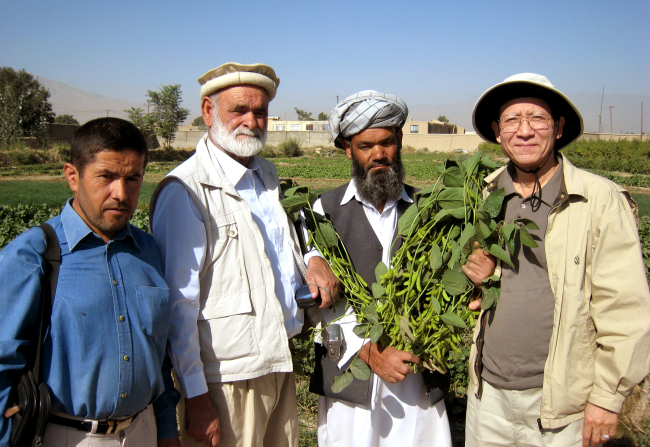
Caption: Nutrition and Education International president Steven Kwon (right) poses with Afghan soybean farmers in Afghanistan, where his nonprofit organization produces and provides soybean products to people to root out malnutrition. (Nutrition and Education International)
Thirteen years later, the international humanitarian agency now operates across 31 provinces in the war-ravaged nation that still suffers from a lack of internal cohesion, material sustenance and national security, providing food and training local farmers for a sustainable soybean value chain.
Last week, a delegation of 13 Afghan civil servants, businessmen and representatives came to South Korea for annual training, sponsored by NEI, Korea’s Ministry of Foreign Affairs, the United Nations World Food Program, Kyungpook National University and the Korea-Afghanistan Friendship Association.
“The first five years were difficult because farmers were wary of our intentions and hesitant about their commitment,” Kwon told The Korea Herald in an interview. “But over time, they came to put trust in our project after seeing their neighbors successfully grow soybeans and become able to feed their families. Children grew healthier and stronger. Through word of mouth, news spread of its benefits.”
In a country where 30 percent of children are stunted and 60 percent of people suffer chronic malnourishment, a sliver of nutrition has an “immediate impact,” according to the former Nestle research scientist.
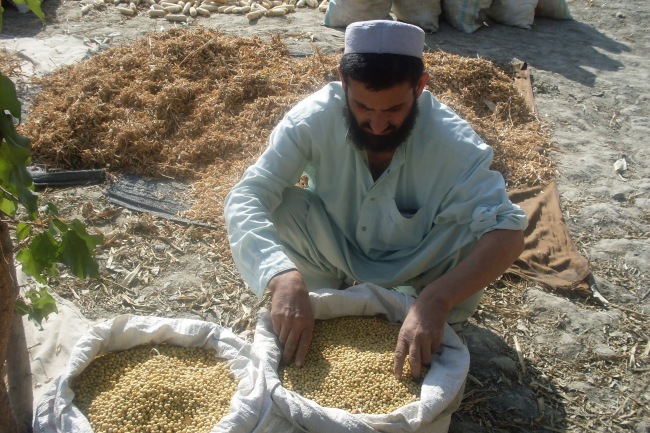
An Afghan soybean farmer in Afghanistan(Nutrition and Education International)
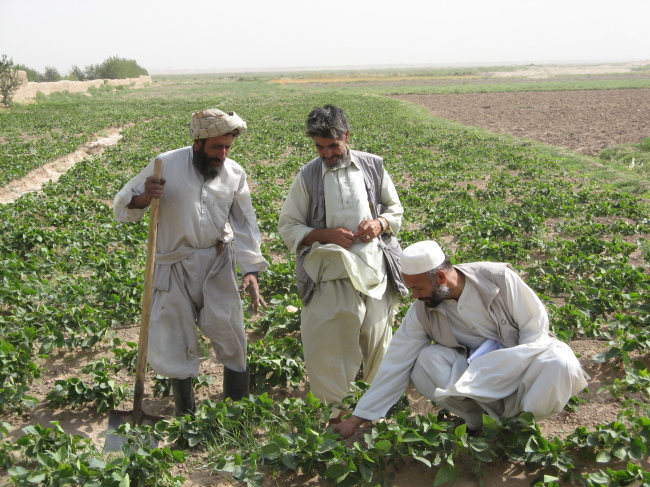
Afghan soybean farmers in Afghanistan(Nutrition and Education International)
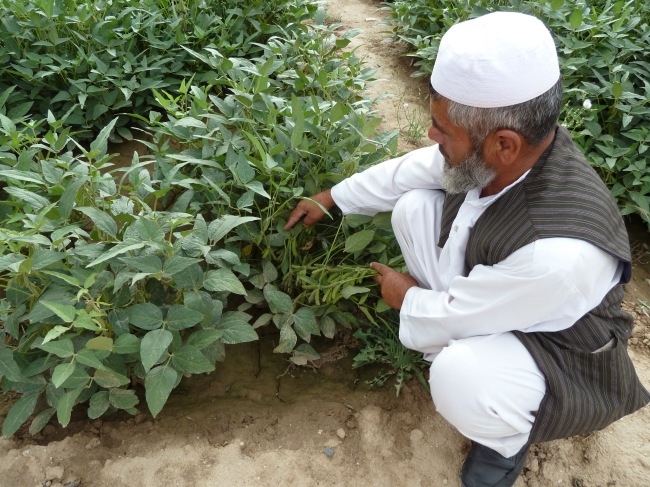
An Afghan soybean farmer in Afghanistan(Nutrition and Education International)
Soybeans, originally cultivated in East Asia, are rich in protein, essential amino acids and omega-3 oils. Containing more protein per kilogram than poultry, beef or eggs, they also help absorb vitamins and minerals critical to a healthy diet.
Under the banner, “By Afghans, for Afghans, in Afghanistan,” NEI has established an independent system of seed multiplication, soy cultivation, food production and market development.
Since 2006, partnering with farmers, tradesmen, village leaders and bureaucratic officials, NEI has supplied soybeans, soy flour, soy milk, soy naan bread and soy cookies to more than 1.7 million vulnerable children and women, mostly in rural areas, where mortality rates are high.
The institution has created 14 recipes, including soy naan bread, which has much more protein and amino acids than traditional wheat naan, a national staple.
“We went to a prison with 10,000 inmates, 300 of them mothers. In Afghanistan, when a mother is imprisoned her children must go with her up to age six,” Kwon noted. “It is a horrendous situation that many children are locked up alongside their mothers. But the government could not provide enough food, so we came to rescue with soy naan.”
NEI also serves internally displaced camps, schools for the blind and deaf, underfunded public schools, orphanages and hospitals.
Through seven factories, soy flour production is expected to reach 6,000 tons this year, up from last year’s 4,000 tons, with next year’s target being 10,000 tons. Three more factories are currently being constructed for crude soy oil and soy meat.
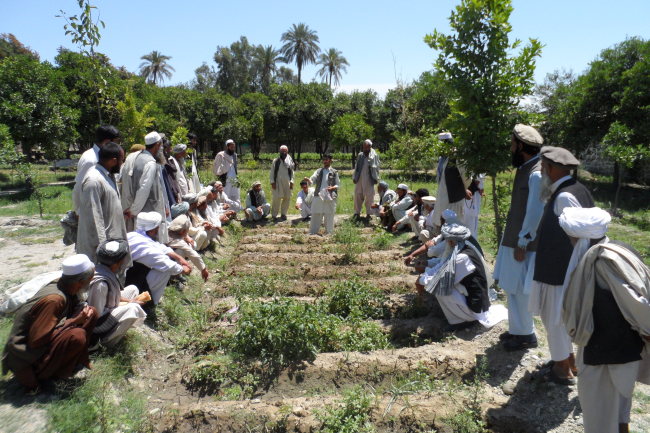
Afghan soybean farmers in Afghanistan (Nutrition and Education International)
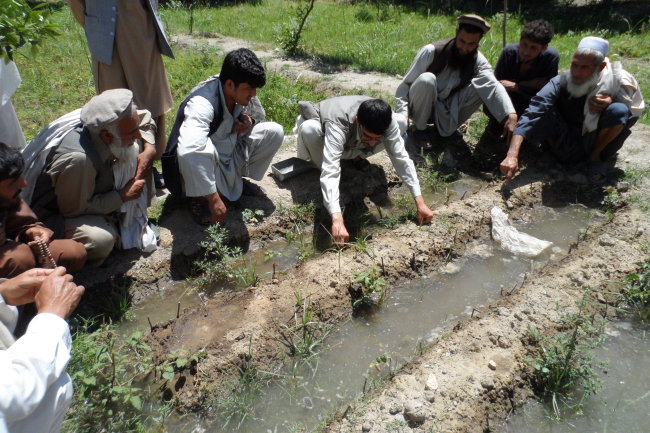
Afghan soybean farmers in Afghanistan (Nutrition and Education International)
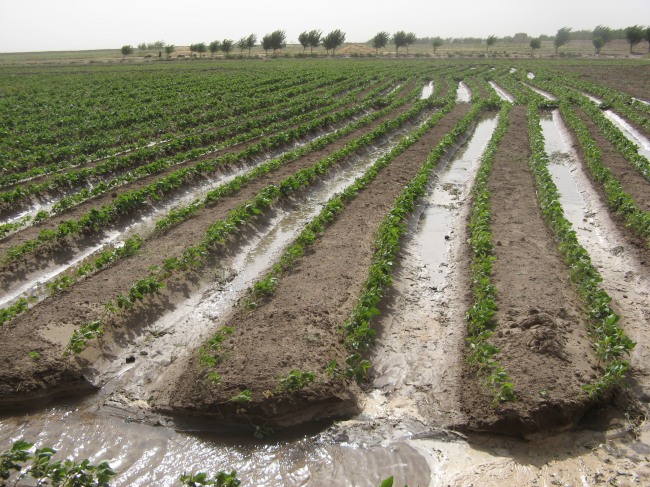
A soybean farm in Afghanistan (Nutrition and Education International)
“Afghanistan is an agricultural country with 80 percent of folks involved in farming,” said Ghulam Nabi Azizi, a representative of a soy product manufacturers’ association.
All soybean products are consumed domestically, he explained. He said the state encouraged exports of popular produce such as grapes and raisins, almonds, apples and saffron to Iran, India, Pakistan and beyond, but that Afghanistan also imported 2 million tons of wheat flour every year.
Regarding Korea’s official development assistance to Afghanistan -- $500 million covering 2012 through 2016 -- Kwon stressed it had been well used.
“Our assistance has contributed significantly to Afghanistan’s development,” he said. “Korea’s own development model has been replicated on various levels of government. Through Korea International Cooperation Agency, Seoul built a vocational training center in Kabul, which is greatly appreciated by citizens across society.”
Seoul has also supported the training of over 1,000 Afghan functionaries, who came to Korea to learn about leadership and administration. Those who have participated fostered deep amity and admiration of Korea, according to Kwon.
Korea’s Saemaul Undong, a community mobilization initiative, is applied throughout Afghanistan’s rural towns under the name, “National Solidarity Program,” according to Abdul Qaher Rabati, chair of the soy farmers association in Parwan province. He added that locals have got together to build roads, bridges and town infrastructure, with Korean agencies administering education, health care and agricultural and rural rehabilitation programs.
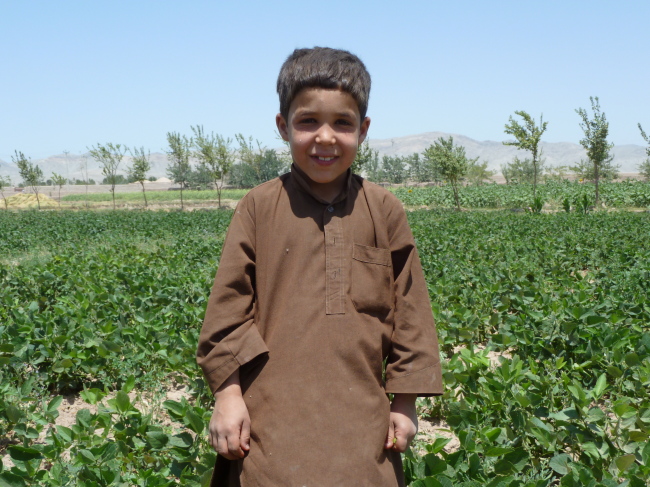
An Afghan child in Afghanistan (Nutrition and Education International)
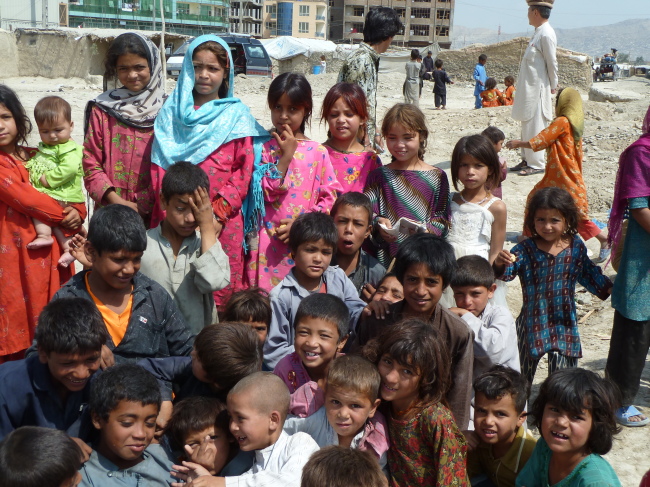
Afghan children in Afghanistan (Nutrition and Education International)
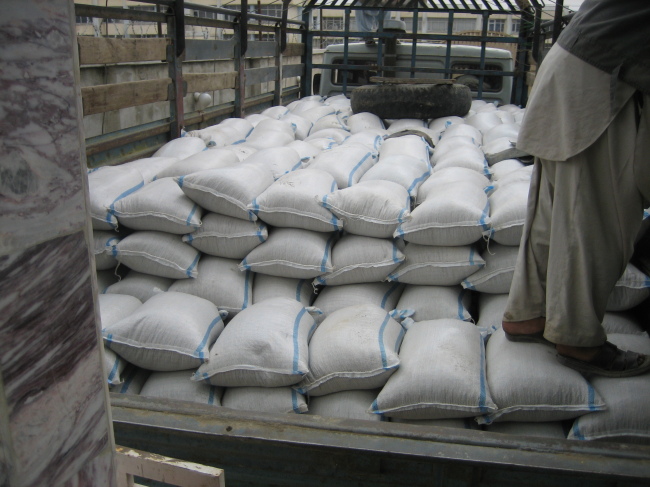
Soybean distribution (Nutrition and Education International)
Pointing out that over $120 billion of foreign aid over the last 12 years were poured into Afghanistan for security and reconstruction, Kwon argued the money was ill-spent due to pervasive malfeasance.
“Foreign aid has recently dwindled, bedeviling the administration of President Ashraf Ghani that seeks to make the country stand on its own feet,” Kwon said. “Job creation for the young is a real cause for concern. Poor security from terrorist attacks by the Taliban, Islamic State and other insurgencies are not helping the situation.”
Ghani is reportedly recalibrating the levers of power from the hands of warlords and chieftains toward technocrats and industrialists; and pushing to open up new trade routes for export of agricultural goods, according to Kwon.
“Afghanistan, despite having the world’s top rare mineral deposits, cannot extract its riches due to terrorism and instability,” he said. “Mentally and culturally, Afghans and Koreans are so similar, including the respect of elders and hunger for success. The country will move very fast once peace comes.”
Kwon added, “The top national challenge is how to bring peace to the country. Long-term planning and investment are needed to yield tomorrow’s fruits.”
By Joel Lee (
joel@heraldcorp.com)













![[Grace Kao] Hybe vs. Ador: Inspiration, imitation and plagiarism](http://res.heraldm.com/phpwas/restmb_idxmake.php?idx=645&simg=/content/image/2024/04/28/20240428050220_0.jpg&u=)
![[Herald Interview] Mom’s Touch seeks to replicate success in Japan](http://res.heraldm.com/phpwas/restmb_idxmake.php?idx=645&simg=/content/image/2024/04/29/20240429050568_0.jpg&u=)
